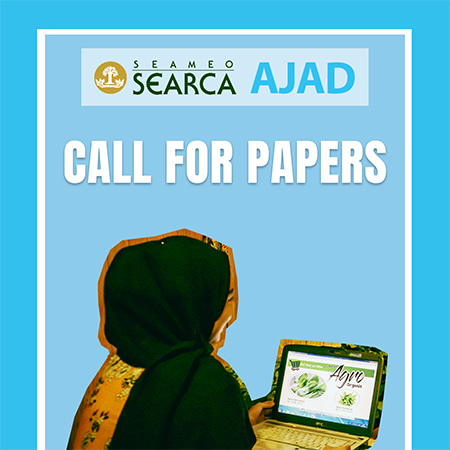- Paperback 1908-6164
- e-ISSN 2599-3895
With climatic shifts becoming more prominent and extreme climatic events becoming more frequent, Southeast Asia (SEA) is considered one of world’s most vulnerable to climate change because of its
heavy reliance on agriculture (ADB 2009). In 2013, around 40 million people in SEA were affected by natural calamities, many of whom are dependent on agriculture. Loss due to floods amounted to USD 10.7 billion in 2010 (ADB 2014). Super Typhoon Haiyan, the powerful tropical cyclone that hit Southeast Asia on 8 November 2013, is the worst ever recorded, with an economic cost amounting to USD 13 billion (International Business Times 2015).
Agricultural interests are fundamental in managing food security. Local governments are major stakeholders in agriculture as well as the best contenders to partake in a robust finance-based solution, such as insurance. Of the 11 countries in SEA, only six (Indonesia, Malaysia, Philippines, Singapore, Thailand [pilot stage], and Vietnam [pilot stage]) have agricultural insurance programs (World Bank 2010).
Several countries have already adopted index insurance program in the region. Basis risk is one of the serious obstacles to the effectiveness of index insurance. However this can be reduced in two ways (Miranda and Farrin 2012): (1) to offer a wider array of index insurance products tailored to different risk exposures; and (2) by constructing indemnity schedules that correlates maximally with policy holder losses. To achieve both requires sound and accurate information, and data from which the index was based. Weather index-based crop insurance that will incorporate historical weather and crop production data is more costeffective and efficient than traditional agricultural insurance. It will reduce farmlevel
monitoring and transaction costs (ADB 2013).
The promotion of market-based agricultural insurance is proven to be critical for the emergence of sustainable agricultural insurance program (Mahul and Stutley 2010). The public-private partnership (PPP) can be viewed as an initial step in providing the direction towards the emergence of private led agricultural
insurance programs. The role of the government is confined in correcting market and regulatory imperfections for a competitive insurance market to emerge.
The SEA countries collaboration in the areas of research and training, institution and capacity building, information sharing and knowledge management, and awareness raising can provide a less costly support service mechanism in the development of a more competitive insurance market. Pooling research funds
by governments for insurance purposes will be effective in addressing the information and data needs for a more viable risk and cost assessments.
The pan-ASEAN agriculture pool is a collective scheme that can ease the risks associated with agricultural production and food security in the region. The ASEAN Member States (AMS) contribute underwriting capacity based on the relative importance of agriculture trade to their economies (Corona 2013).
The AMS which are net consumers of agricultural products will subsidize the insurance premiums of those countries which are net producers, as a result fostering food security and political stability across the region. The main goal of the insurance scheme is to encourage farmers to continue food production
despite risks.
Download for free
PDF format in this language: English


